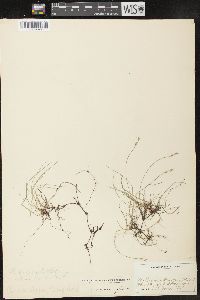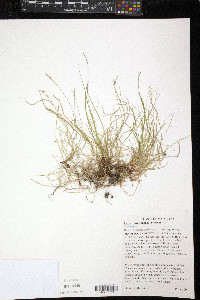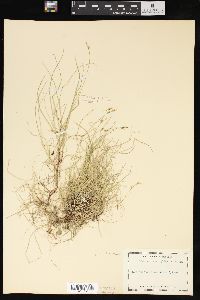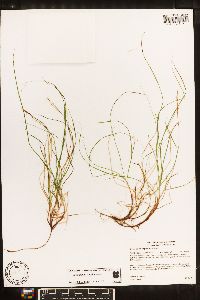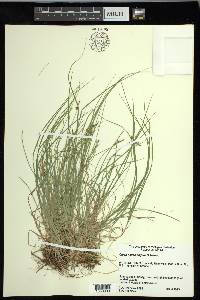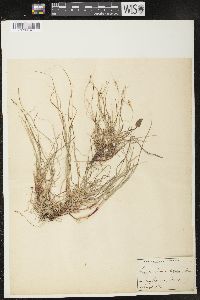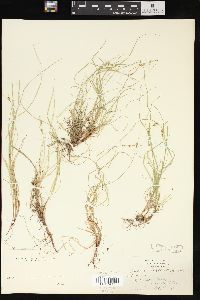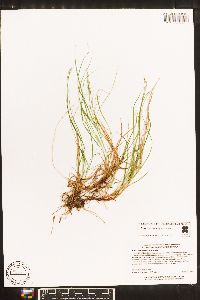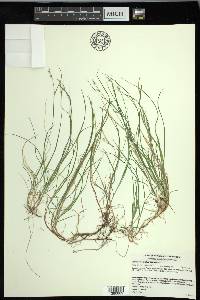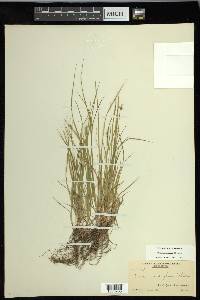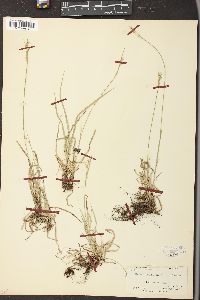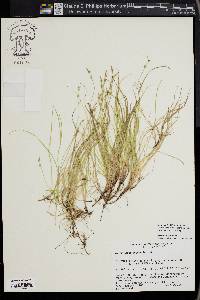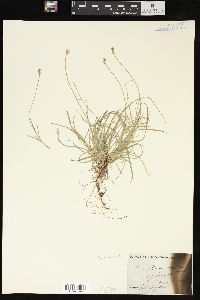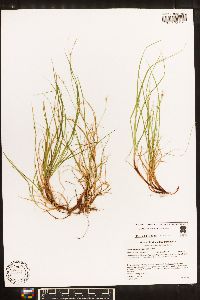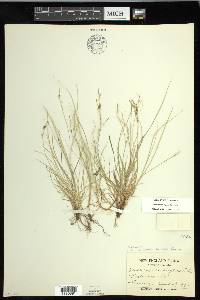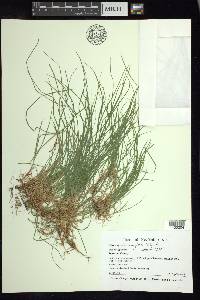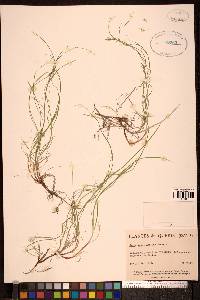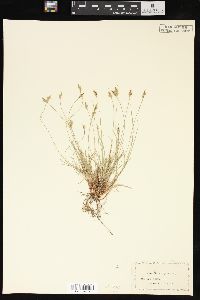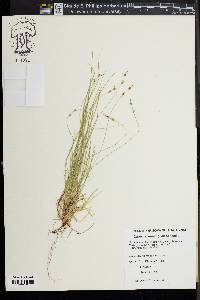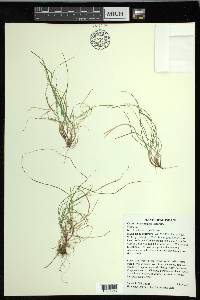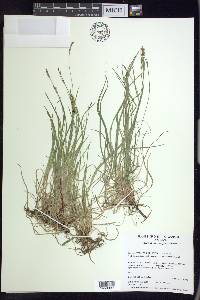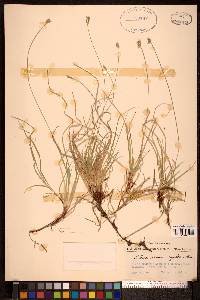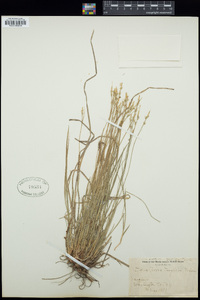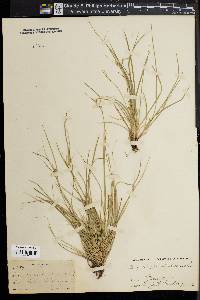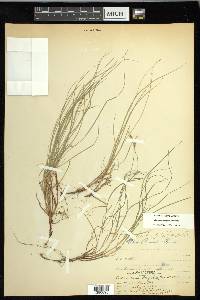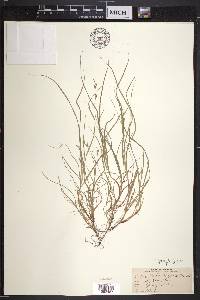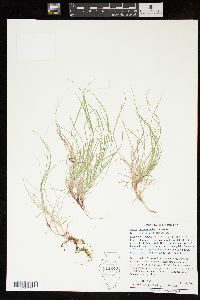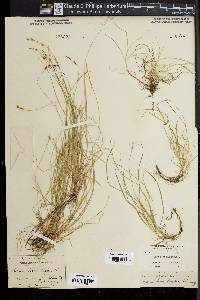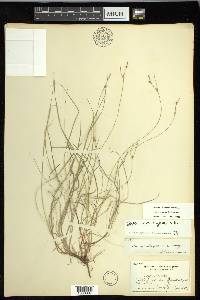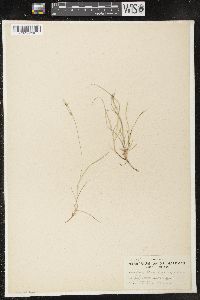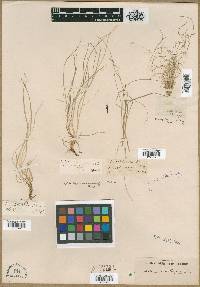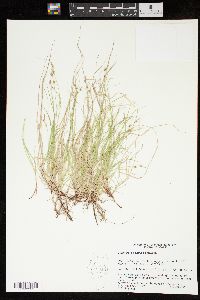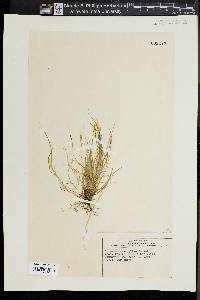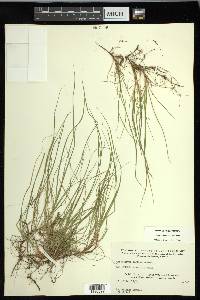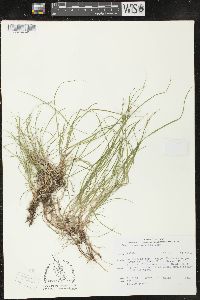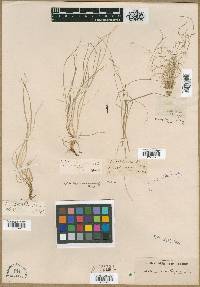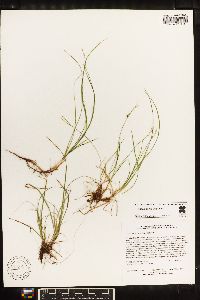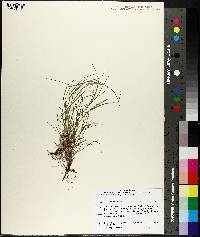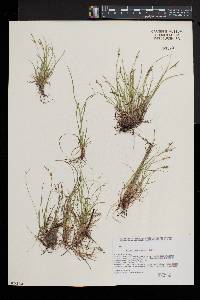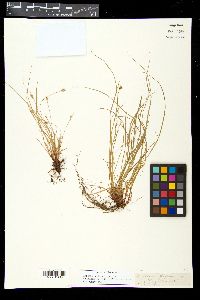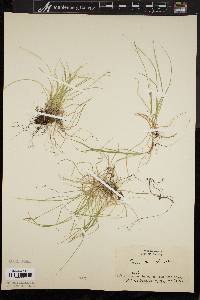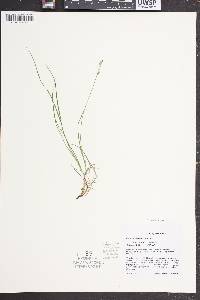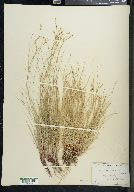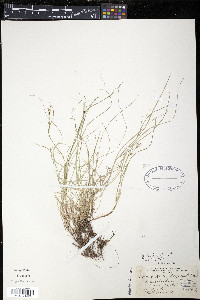Carex novae-angliae
|
|
|
|
Family: Cyperaceae
New England Sedge
|
Plants loosely cespitose; rhizomes ascending to erect, reddish to reddish brown, 0-10(-20) mm, slender. Culms 5-40 cm, weakly scabrous distally; bases not fibrous. Leaf blades green, equaling or exceeding culms, 0.7-1.5 mm wide, herbaceous, smooth to papillose abaxially, weakly scabrous adaxially. Inflorescences with both staminate and proximal spikes; peduncles of staminate spikes 1.9-5.9 mm; proximal nonbasal bracts leaflike, equaling or shorter than inflorescences. Spikes: proximal pistillate spikes 2-3 (basal spikes 0); cauline spikes remote, nonoverlapping, proximal 2 usually separated by more than 7 mm, with 3-10 perigynia; staminate spikes 4-15 × 0.7-1.3 mm. Scales: pistillate scales pale brown to pale reddish brown, ovate, 2-2.5 × 1-1.4 mm, shorter than to equaling perigynia, apex cuspidate to acuminate; staminate scales oblong to oblanceolate, 3.1-4.6 × 0.7-1.3 mm, apex long-acuminate to obtuse. Anthers 1.5-2.1 mm. Perigynia pale green, veinless, ellipsoid, 2.2-2.6 × 0.8-1 mm, longer than wide; beak 0.3-0.7 mm, straight, pale green, apical teeth 0.2-0.3 mm. Stigmas 3. Achenes dark brown, obovoid to ellipsoid, acutely trigonous in cross section, 1.4-1.7 × 0.7-0.9 mm. Fruiting early Jun-early Jul. Moist to mesic sites, in shade or partial shade under mixed deciduous forests, occasionally under spruce-hemlock canopies; 100-1000 m; St. Pierre and Miquelon; N.B., Nfld. and Labr., N.S., Ont., Que.; Conn., Maine, Mass., Mich., N.H., N.Y., Pa., S.C., Vt., W.Va., Wis. Recently discovered plants on the coastal plain in South Carolina resemble Carex novae-angliae in habit and perigynium features and have well-developed basal spikes. They require further study to determine their relationships with other members of the section.
Loosely cespitose, reputedly sometimes rhizomatous; stems very slender, 1-4 dm, shorter than the lvs; main lvs 1-2 mm wide; terminal spike staminate, slender, 4-16 mm; pistillate spikes usually 2 or 3, 3-6 mm, 1-3 cm apart, the 2 lowest not overlapping, the lowest one distinctly peduncled; lowest bract foliaceous, often equaling or surpassing the infl; pistillate scales stramineous or reddish-brown, with hyaline margins, acute or short-cuspidate, usually wider but somewhat shorter than the 2-10 perigynia, these light green to brownish-stramineous, minutely pubescent, 2.2-2.7 mm, the body slightly flattened, obovoid above a stipe-like base, 2-keeled, abruptly prolonged into a beak a fourth to two-fifths as long as the body; achene rounded-trigonous. Moist woods; Nf. to s. Ont. and reputedly Wis., s. in the mts. to Conn. and Pa. Gleason, Henry A. & Cronquist, Arthur J. 1991. Manual of vascular plants of northeastern United States and adjacent Canada. lxxv + 910 pp. ©The New York Botanical Garden. All rights reserved. Used by permission. |


